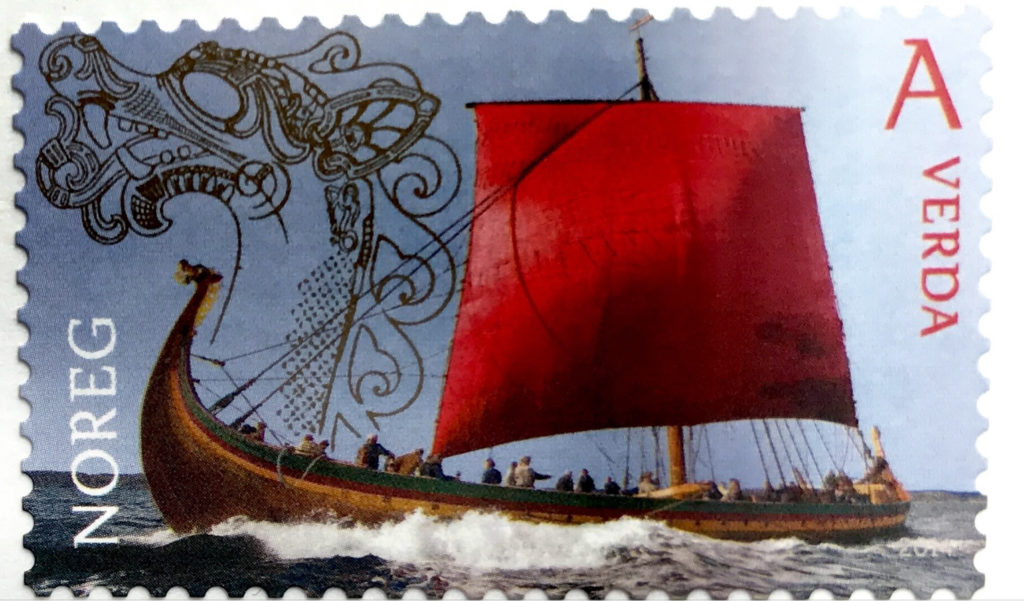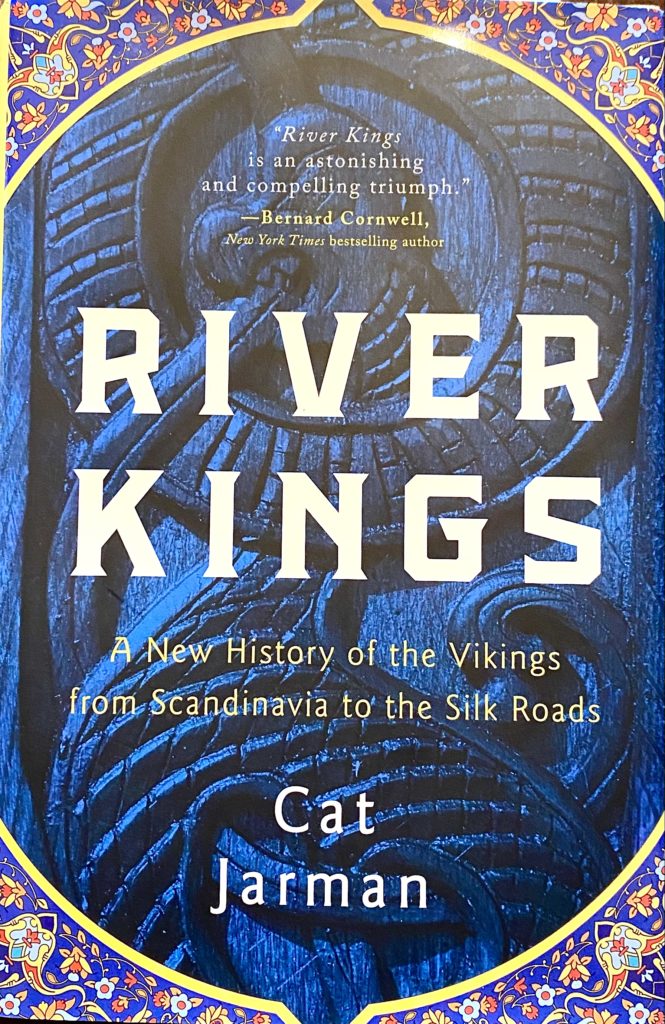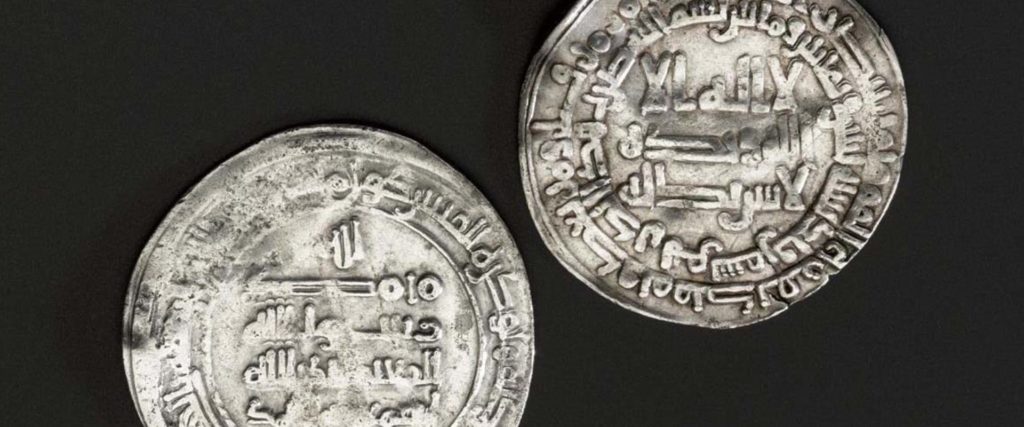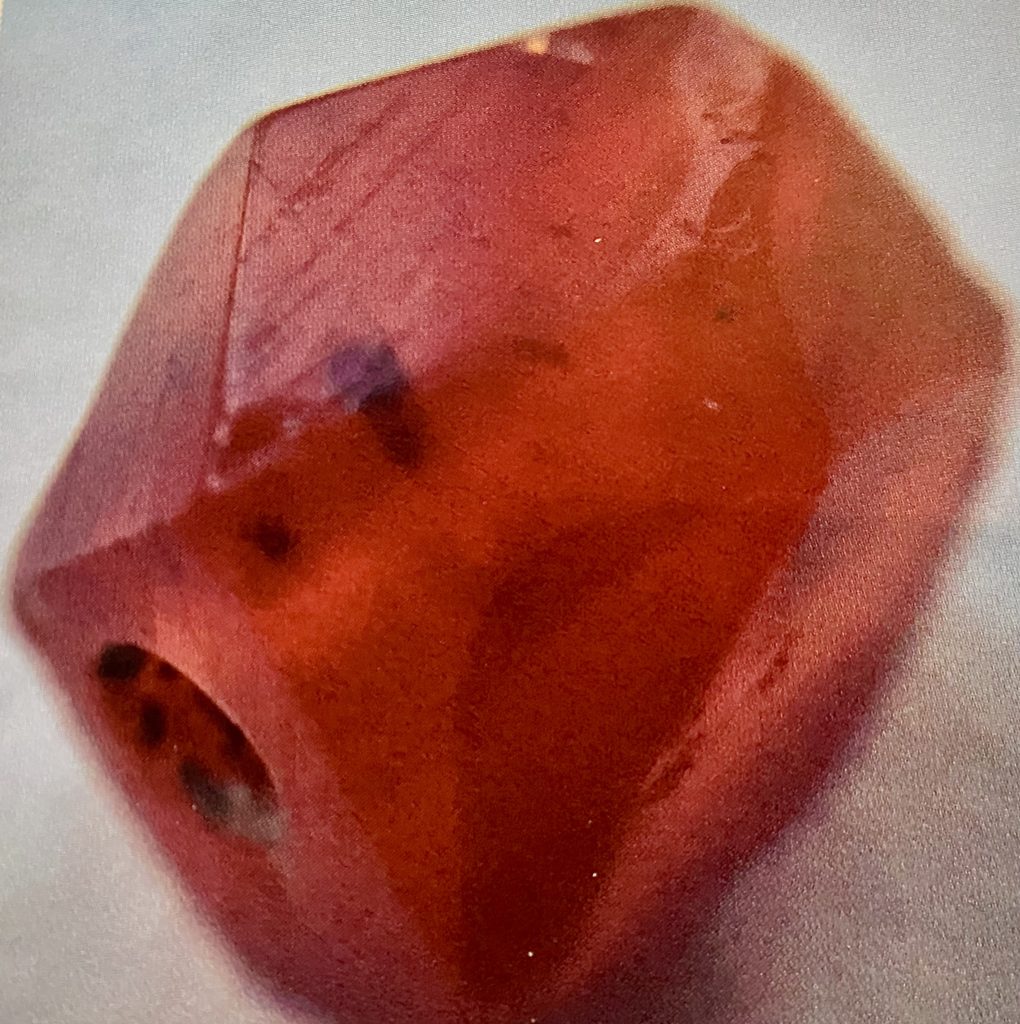
By Patrick Hunt –
Vikings continue to be a magnetic topic, especially in light of new discoveries of ships, burials and sites that enable us to concentrate more on their far-flung commercial savvy and technology than the weary and skewed caricature of merely violent rapacity. Anyone who has been to the Oslo Viking Ship Museum (Skiphuset) and seen the astonishing craft of their sleek oak-carved boats will understand how they plied diverse waters from the icy Baltic to the long eastern rivers of the steppes with longships whose shallow parabolic keels enabled landing almost anywhere without a harbor, needing merely a beach or even a few feet of water. [1] Readers who have thus examined excavated Viking longships can well appreciate a brilliant new book that reads like a well-sleuthed detective story.

Archaeological scientist Cat Jarman’s riveting River Kings (Pegasus Books, 2022) deftly follows, among other treasures, a single carnelian bead – semiprecious stone jewelry for millennia in the Near East – from India via Baghdad; made in the Orient but ending up a long way off around 873-74 CE more than halfway around the world in a British Viking tomb at Repton, Northumbria. The subtitle of this book is aptly described as “A new history of the Vikings from Scandinavia to the Silk Roads” and it fulfills that promise in every way: most accounts of the Vikings concentrate mainly on Scandinavia and the Baltic but Jarman provides the complete picture of their wanderings, as the original Old Norse word vikingr may often be rendered as “wanderer”, so the Black Sea and Baghdad were easily within their long-distance trade network and travel, as well as along rivers like the Volga, Dnieper, Dniester and Don, among others. The 10th c. Byzantine compilation of Constantine VII Porphyrogenitus’ De Administrando Imperio 42 describes the Vikings (Rus-Varangians) as “barbarians” following the Dnieper River (Potamos Danapros) from Russia to the Black Sea and Bosporus to trade. [2].
The intrepid Viking warrior and war chief whose Repton tomb was the ultimate resting place for the gem – and whose femur bone was heavily hacked in a fighting wound from an axe – likely had no idea of the global journey this single gem took. Nearly as exotic as the carnelian gem and likewise showing their reach, Islamic silver dirham coins from the Near East are found in many Viking hoards like the Vale of York Hoard. Although many broken and twisted silver fragments known as hack-silver are also found in Viking contexts, it is the complete Islamic coins that are far more indicative of how far the Vikings traveled. As Jarman relates, “It is important to understand what the dirhams represented to the Vikings and why the coins are found in such great quantities in the Viking world: the Scandinavians were interested in the coins’ silver content rather than their monetary value.” [3] Many dirhams found in Viking hoards like the Vale of York were minted in distant Samarkand, modern Uzbekistan, along the Silk Road. In fact, between 80,000-100,000 dirhams or parts thereof have been found in Viking hoard contexts including Vale of York, Isle of Skye, Storr Rock, Torksey, Galloway, Spillings, Arlanda and many others including in Russia.[4] The acclaimed British Museum 2014 Viking blockbuster exhibition ‘Vikings: Life and legend” drew from many hoards in its own collection.

Jarman has also traced carnelian working of millennia past back to lapidary workshops in Ahmedabad and Lothal (Gujarat) India near the Gulf of Khambhat, gemology skills that that began at least as far back as the Harappan culture in the Early Bronze Age. In her meticulous research on medieval trade and technology, Jarman visited modern carnelian gem workshops using similar lapidary traditions harking back to 2500 BCE but documented as existing in these same places in Viking times as sources for the trade that would show up in the Repton Viking graves.

Jarman’s fascinating book balances the familiar one-sided melodramatic account at Lindisfarne in AD 793 that makes the pagan Vikings look extremely violent with the monks’ pleas to God, an old yarn neglecting to mention that most of the clergy merely had their rear ends spanked with Viking swords rather than a total bloodshed, although church treasures at Lindisfarne were not sacred to the Norsemen who loved the bullion but cared little about the religion. ”A furore Normanorum, libera nos, Domine,” implored the naked monks stripped of their fine vestments: “From the fury of the Northmen deliver us, O Lord.” But their chronicler Symeon of Durham in his History of the Church at Durham written considerably later around 1104 clearly enumerates: “Some of the brethren they slew, some they carried off with them in chains, the greater number they stripped naked, insulted, and cast out of doors, and some they drowned in the sea.” [5] So it was more church treasures lost than lives, more hurt pride than limbs at Lindisfarne.
Jarman is a forensic scientist (Ph.D., University of Bristol), a bioarchaeologist conversant with DNA analyses, isotopic analyses and radiocarbon dating, so it is even more praiseworthy that this book is as gripping as a novel because she makes all the recondite information she has carefully accumulated as accessible as possible, clearly confirming the Vikings as early practitioners of an astonishing globalization over a millennium ago. I highly recommend this wonderful book and all its sleuthing tales written in a mesmerizing way where no one will be put off by any unexplained archaeological jargon – it will be required reading in my Stanford courses on Vikings and I will be taking it to Norway in a few weeks for several upcoming National Geographic Expeditions. One of my favorite Jarman quotes (slightly redacted here) tells more about the Vikings than many books and documentaries: “Viking is more of a job description than a genetic heritage…”
Notes:
[1] Gareth Williams. The Viking Ship. London: British Museum Press, 2014; Patrick Hunt. “Viking Legacy: Longships and Seafaring”. Electrum Magazine, Feb 2017 (https://www.electrummagazine.com/2017/02/viking-legacy-longships-and-seafaring/)
[2] Constantine VII Porphyrogenitus. De Administrando Imperio 42. G. Moravcsik, ed. R. J. H. Jenkins, tr. .185-6. Dunbarton Oaks, 1967, 2nd imp. 1985, 185-6
[3] Jarman, 57
[4] T. S. Noonan. “Ninth Century Dirham Hoards from Northwestern Russia and the Southeastern Baltic.” Journal of Baltic Studies 13.3 (1982) 220-44; Chris Skinner. “Vikings: Raiders or Traders?” The Finanswer. March 11, 2014 (https://thefinanser.com/2014/03/vikings-raiders-or-traders-2.html/).
[5] Symeon the Monk, Historia Ecclesia Dunelmensis. Joseph Stevenson, tr. Llanerch Press, 1993 (1855); Oxford: Clarendon 2000, ed. David Rollason.
.